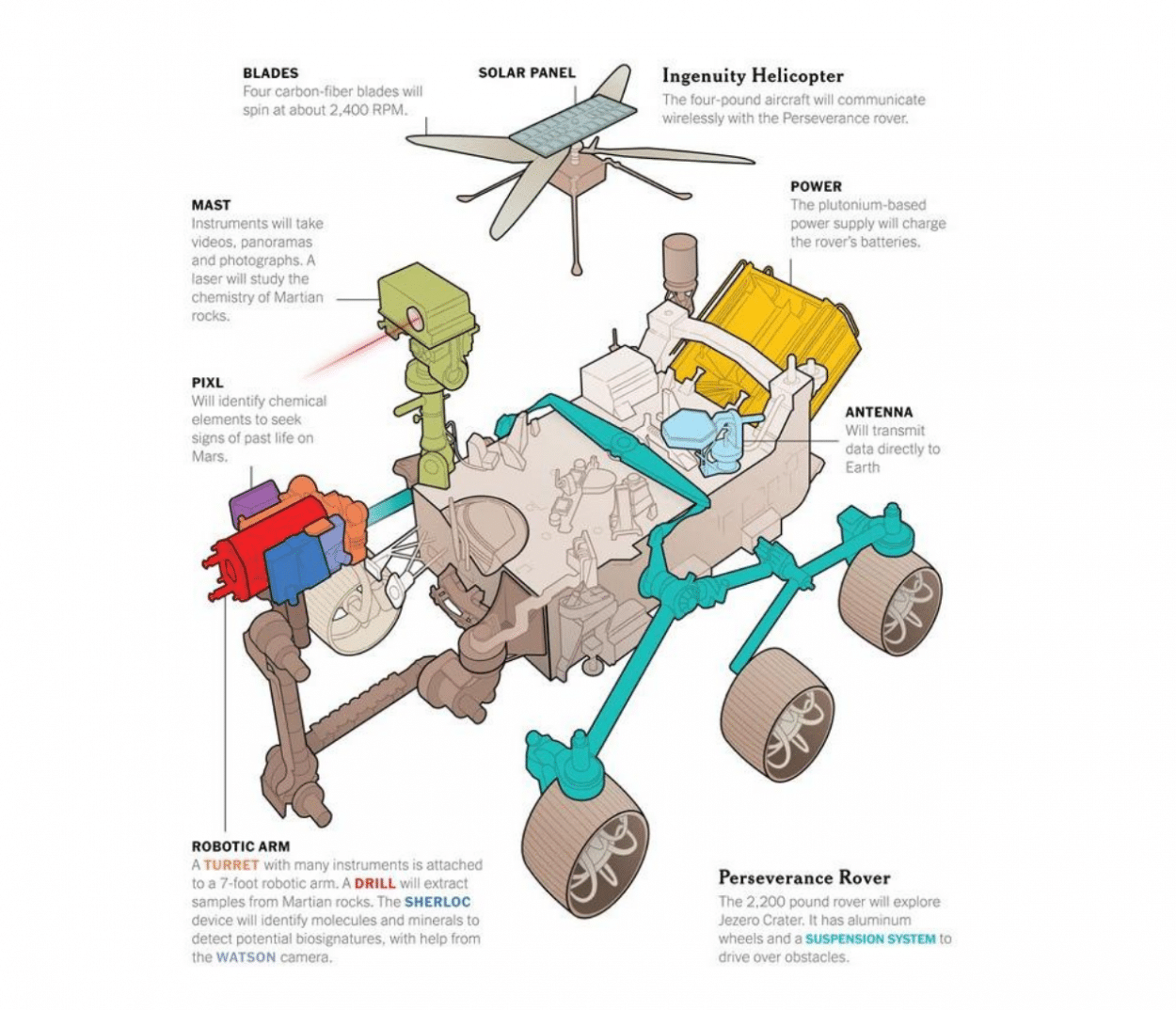Perseverance, NASA’s new robotic astrobiologist, has successfully taken off today for a seven-month journey to the Red Planet. The mission named Mars 2020 will explore the potential for life on Mars, seek signs of habitable conditions in the ancient past as well as evidence of past microbial life itself. This is the third and final mission to Mars of the month, after two earlier launches by the United Arab Emirates and China. Perseverance is expected to land on February 18, 2021.
The launch took place today Thursday, July 30, at 7:50 a.m. (11:50 a.m. GMT or 1:50 p.m. Paris time) from Cape Canaveral, Florida, using a United Launch Alliance Atlas V rocket.
Watch the launch on NASA’s website.
Seeking Evidence of Past Life
Perseverance is a car-size wheeled robot nearly identical in design to NASA’s previous Mars rover, Curiosity, which landed in 2012. Curiosity’s mission was to look for habitable environments, and it found signs of a freshwater lake. Perseverance is to go a step farther and will be looking for signs of past life in a crater named Jezero that was once a lake, some 3.5 billion years ago.
Previous rovers, including Curiosity, have shown that the Red Planet was “habitable”, i.e. that the conditions thought to be conducive to the appearance of life (carbon, water, favorable climate) were present about 3.5 billion years ago. But we still don’t know if it was inhabited, and this mission will try to bring an answer to this question.

Stronger Than Curiosity
The new rover, built at NASA’s legendary Jet Propulsion Laboratory in Pasadena, California, is an improved version of Curiosity: its six wheels are stronger, it is faster, smarter and can self-pilot up to 200 meters per day. Three meters long, Perseverance weighs a ton, has 19 cameras and two microphones, which could be the first to record Martian sound. Its robotic arm is two meters long. A plutonium generator will recharge its batteries.
Perseverance will be carrying a new set of onboard instruments designed by French and Spanish researchers to carry out analyses of Martian rocks, including a drill that can collect core samples of the most promising rocks and soils and set them aside in a “cache” on the surface of Mars. The sample will then be sent back to Earth and this will be part of a future mission, in a few years.
A helicopter is also part of the mission. Called Ingenuity, this four-pound Marscopter is a technology experiment. If it succeeds, it will be the first powered flight on another planet. The rotors have to spin at 2,4000 revolutions a minute to generate lift in the thin atmosphere of Mars, just 1% as dense at Earth’s at the surface.

Preparing Life on Mars
So far, only the Americans have succeeded in landing intact robots on Mars since 1997: four landers (fixed), and four astromobiles (Pathfinder, Spirit, Opportunity and Curiosity). Perseverance will be the fifth rover to land if it remains intact until then. China will attempt its first landing on Mars next year: its Tianwen-1 mission was launched last week, with a four-wheeled robot scheduled to land in May 2021.
According to NASA, the proof of past life on Mars will most likely not be confirmed, if it exists, until these samples are analyzed over the next decade. The mission is also aiming at preparing the conditions for a potential life on Mars around the years 2030.









